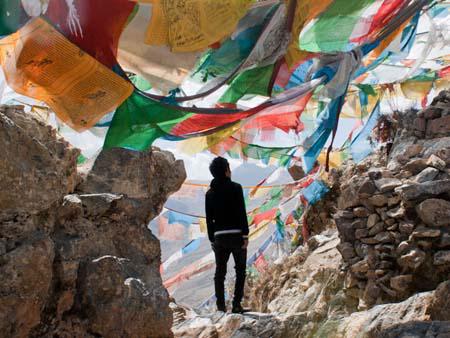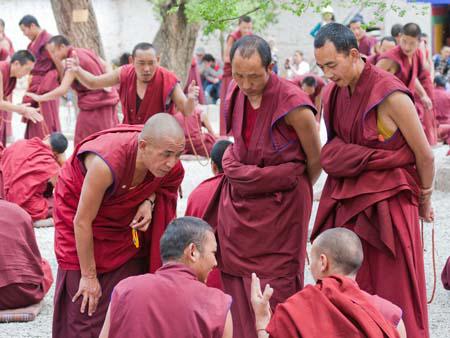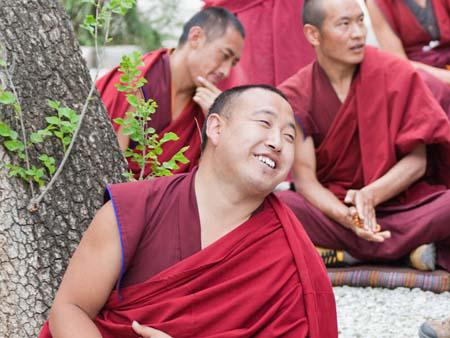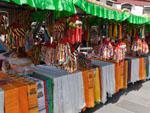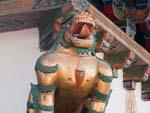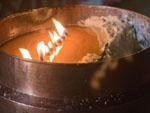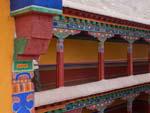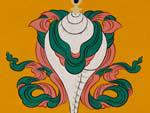Norbulinka (Summer Palace)
Norbulinka is known as the Summer Palace of the Dalai Lamas. We had previously watched the Tibet featured films Kundun and Seven Years in Tibet and were keen to see how well the films represented the living quarters of, in particular, the current fourteenth Dalai Lama. Our guide told us that during summer and the yoghurt festival, the Norbulinka is full of picnicking Tibetans.
Our first stop was the most recent addition to the complex, the ‘New Summer Palace’ and also known as the Palace for the most recent fourteenth Dalai Lama. It was built in the mid 1950’s, just a few years prior to his exile to India. Inside, we were able to view the audience chamber, the Dalai Lama’s private quarters (even his bathroom), and assembly hall. The rooms were exactly as he had left them so many years ago, and it was a little surreal walking through the palace.
We then visited the palaces of the eighth and thirteenth Dalai Lama. The eighth had some beautiful thangkas (Tibetan silk paintings) and the thirteenth had some interesting vehicles used by the lamas including bicycles, carriages and buggies.




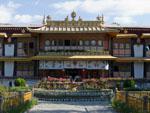
















thydzikgooglemap(http://sonyaandtravis.com/maps/lhasa-tibet-norbulinka-summer-palace.xml,s)
Potala Palace (Winter Palace)
After Nobulinka we headed to the Potala Palace, the once Winter Palace of the Dalai Lamas. The lines were long, with foreign tourists, Chinese and Tibetan pilgrims. Due to its popularity, not only are a limited number of visitors allowed to enter the Palace per day (two thousand), there is a time restraint of forty-five minutes per area. The walk up to the Red Palace was quite exhausting. At over three-thousand metres high, walking up all those steps was challenging! Inside the Red Palace we saw the Chapel of Jampa, King Songsten Gampo’s meditation chamber (the oldest room in the Potala) and a number of tombs for the previous Dalai Lamas (thirteenth, eighteenth and nineteenth). Many of the rooms were closed to the public. We also were able to walk on the roof of the White Palace and view the throne room (where the Dalai Lamas could receive guests), meditation room and bedroom of the Dalai Lama.



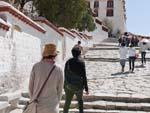




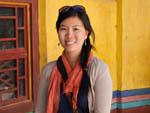





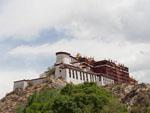
thydzikgooglemap(http://sonyaandtravis.com/maps/lhasa-tibet-potala-palace-winter-palace.xml,s)
Tibet Museum
We had some time in the afternoon to visit the Tibet Museum afterwards, which had some beautiful Thangkas, Tibetan Opera Masks, scriptures and musical instruments.




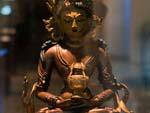




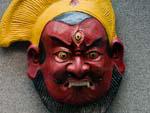








Barkhor walking tour
Later we did a walking tour of the Barkhor area which included some interesting sites including the Muslim Quarters and the Sangkhung Nunnery.
thydzikgooglemap(http://sonyaandtravis.com/maps/lhasa-tibet-walking-tour.xml)
- Barkhor circuit
- Tromsikhang Market
- Gyüme Lower Tantric College
- Meru Sarpa Monastery
- Eizhi Exquisite Thangka Shop
- Karmashar Temple
- Dropenling crafts centre
- Ancient Art Restoration Centre
- Muslim quarter
- Islam Restaurant
- Ani Sangkhung Nunnery
- thangka workshop
- Lho Rigsum Lhakhang


















































































































